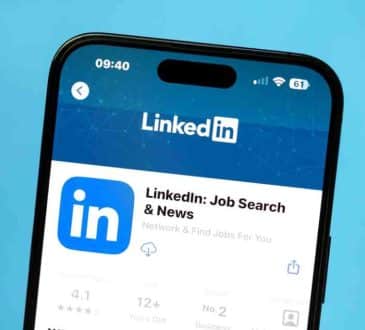Leadership Fundamentals That Every CEO Should Know

Over the past 20 years our perception of leadership has changed. Leadership theories have come and gone and leadership gurus have risen then faded away. Guidance on how to be a good leader has evolved and the leadership tool kit keeps changing as new methods outdate the old.
The fundamentals of human behaviour and our neurology however have stayed the same. It’s these key fundamentals that guide us on how to effectively manage our human assets and how to build high performing teams.
WHY?
When building our capability to lead others, these fundamentals are an important place to start for 3 reasons:
- Regardless of the personality profile or cultural background of the people we manage, the fundamentals remain consistent;
- Mastering these fundamentals facilitates our success in all interactions, from managing staff to peer to peer engagement, managing up and even our personal relationships;
- A focus on a tool kit which is immediately developable allows us to experience immediate impact which is vital for sustained behaviour change. Our staff also experience immediate benefit and an increase in their engagement with us.
THE NEUROLOGY OF LEADERSHIP
As we learn more about the brain, we discover how to manage our brain chemistry to facilitate greater problem solving, creativity and innovation as well as reframe stress and pressure to our advantage. The centre piece of understanding how to apply this in the workplace is the battle between two brain structures – the prefrontal cortex and the limbic system.
The prefrontal cortex [PFC] is responsible for your executive functioning. Any time that you need to learn something new, remember something, analyse information or make a complex decision, you need your PFC to be at its best.
One factor that gets in the way of this clear thought and analysis is the limbic system which is responsible for our emotive responses. Our limbic system is vital for our survival and as such, its responses are fast and powerful. Anytime that we’re even a little anxious, frustrated or uncertain our limbic system quickly absorbs our cognitive resources [oxygen and glucose] leaving next to nothing for the poor PFC.
As leaders, what we do has an amplified impact on the limbic systems of our staff. On the positive side, when we promote a reward state, we create an environment conducive to higher order thinking, better decision making and higher levels creativity and innovation.
However, when we create a threat in the limbic system even when unintended, the brain releases very aggressive neuro chemicals and hormones into the brain and body, adrenaline being a common example. When in this fight / flight mode, the quality of our thinking is compromised and if we remain in this state for an extended period it is damaging to our mental and physical wellbeing.
David’s Rock’s work in Neuro-leadership shows us that our first priority is to remove the threat response and then lead in a way that promotes the reward response. If we do things that stimulate both, the threat response will always win because it’s faster, stronger and longer lasting.
In his paper “Managing with the Brain in Mind” David discusses the 5 levers that we have as leaders that can promote both a threat response and a reward response [the SCARF model]. Knowing these SCARF responses helps us to promote environments where are staff are at their best.
FUNDAMENTAL TOOLKIT
Leadership, as with anything in our life and career, requires mastery of the basics. While leadership development programs are often focused on highly complex, transformational skills; we estimate that less than 10% of leaders consistently do the basics well. Without mastery of these fundamentals, the next level of capability building will be short lived at best.
One element of the leadership fundamental toolkit that reduces SCARF threat and promotes reward is providing effective feedback.
PROVIDING EFFECTIVE FEEDBACK
Positive and corrective feedback both represent missed or underutilised opportunities for leaders. While corrective feedback can be challenging, a few simple rules simplify the complex.
Firstly, by using specific examples, leaders are able to keep the feedback conversation objective and focused on development.
Second, when feedback is regular and immediate, there are no surprises for staff and they are developed ‘in the moment’. The 2016 McKinsey article “Ahead of the curve: The future of performance” describes the macro shift away from formal performance reviews to regular feedback conversations.
Finally, using praise to promote a limbic reward state creates a conversational environment more open to challenging feedback and wires the brain for learning.
This final point is based on the dopamine response which represents another missed opportunity for leaders – the use of praise. When we provide even seemly small amounts of praise for completing a basic task, dopamine leaks into the brain which not only feels good, it correlates to greater learning outcomes.
In fact, University of Pennsylvania [2009] found that leaders who regularly us praise experienced a 31% boost in team productivity and Harvard Business Review [2013] found that the ideal ratio of praise: correction in high performance teams is 5:1.
In any team there are plentiful untapped opportunities for leaders to praise their staff. Leaders who do this as part of their everyday are better equipped to build and lead high performing teams.
Other skills in the fundamental toolkit are delegating, leadership communication, managing underperformance and having career conversations. Starting with the neurology of leadership and supporting leaders with the 2-3 fundamental skills most relevant to them at the time boosts leadership impact scores by 10% – 30% within 6 weeks.
With these fundamentals mastered, leaders can then be stretched with more advanced leadership skills with a degree of difficulty.
Have you read?
7 Lessons CEOs Can Learn from Donald Trump
Yes, Health and Wellness Programs Are Worth Your Investment
Top 25 U.S. Colleges For Communications Majors With The Highest Earning Potential, 2016
Stanford Tops Wall Street Journal’s US College Rankings, Followed by MIT, Columbia, UPenn, And Yale
By Christopher Paterson, managing director at ALCHEMY Career Management.
Add CEOWORLD magazine to your Google News feed.
Follow CEOWORLD magazine headlines on: Google News, LinkedIn, Twitter, and Facebook.
Copyright 2024 The CEOWORLD magazine. All rights reserved. This material (and any extract from it) must not be copied, redistributed or placed on any website, without CEOWORLD magazine' prior written consent. For media queries, please contact: info@ceoworld.biz









